Adirondack Plants
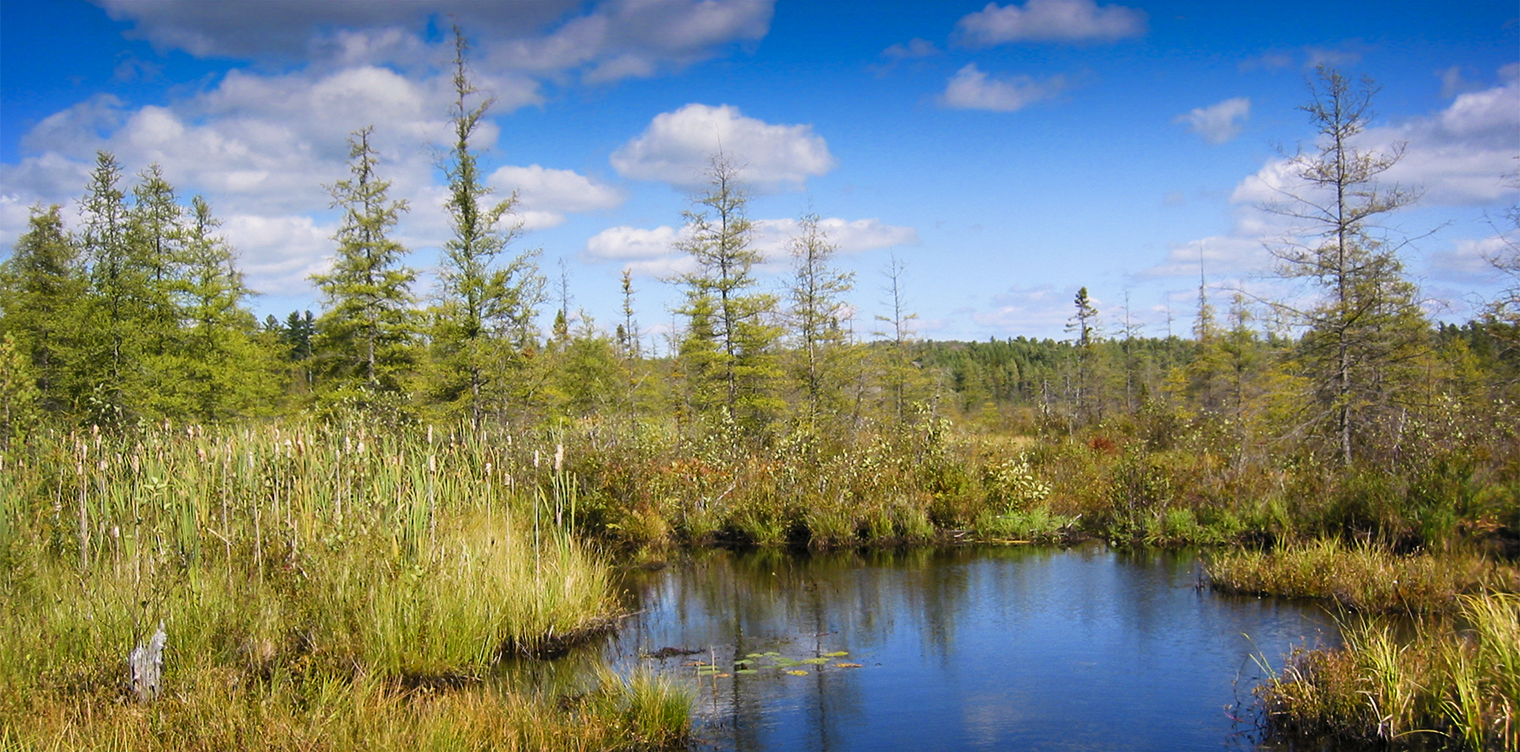
Studying the plant life of the Adirondacks is critical to understanding how the various organisms that comprise each habitat interact and sustain one another. Plants and wildlife tend to live together in recognizable communities, each composed of individuals adapted to life under similar conditions. Some plant species require deep, fertile soils, while others thrive in the nutrient-poor environment of an acid bog.
Natural and man-made changes alter the soil, landscape, water table and climate, setting in motion a cascading series of changes affecting both plant life and wildlife. Understanding how the plants and animals fit together and respond to change is crucial to understanding and appreciating the natural landscape of the Adirondack Mountains.
Wildflowers of the Adirondacks
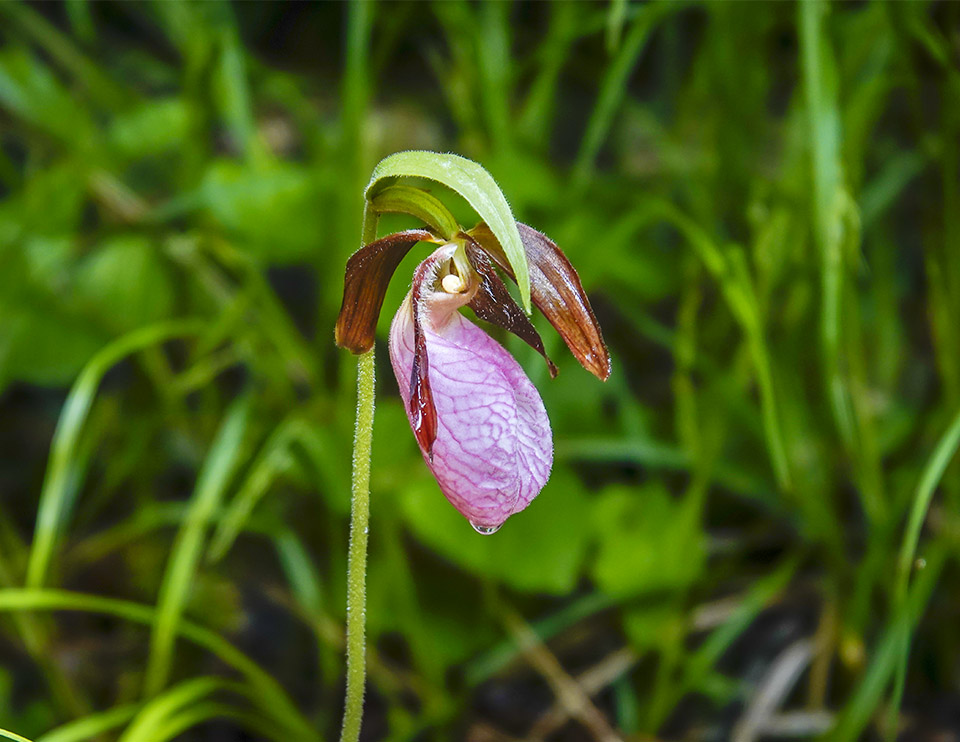
Monitoring, photographing, and analyzing the changing array of wildflowers on the trails is one of the most enjoyable aspects of exploring the natural environment in the Adirondack Park. Part of the fascination is how these organisms respond to the march of the seasons.
- Early spring brings an explosion of spring ephemerals – springtime flowers, such as Trout Lily and Carolina Springbeauty. that bloom before the trees leaf out. This strategy allows these plants to take advantage of the full sun hitting the forest floor early in the growing season. Once the leaves are out and the forest floor is deep in shade, the leaves wither away leaving just the roots, rhizomes, and bulbs underground.
- After the ephemerals comes the mid- and late-spring bloomers, such as trilliums and Pink Lady's Slippers. The bloom period may be rather fleeting, but (unlike ephemerals) the foliage remains after the flowers are long gone.
- Summer brings a new cast of floral characters, as the orchids that flourish in bogs come into bloom, as do summer wildflowers, such as Common Wood Sorrel and Twinflower, that prefer a mixed conifer/hardwood habit. Late summer brings Spotted Touch-Me-Not, Dewdrops, and the Whorled Wood Aster. Many of the wildflowers which have bloomed earlier have now produced attractive fruit, such as the glossy deep blue berries of Clintonia.
- As fall and cooler temperatures arrive, a few wildflowers – such as the asters – stubbornly continue blooming. The foliage of others, like Bunchberry and Wild Sarsaparilla, turns deep red or bright yellow. The foliage of White Baneberry, now sporting bright white berries on thick red stalks, turns an attractive yellowish green, with the veins and margins outlined in darker green.
Trees of the Adirondacks
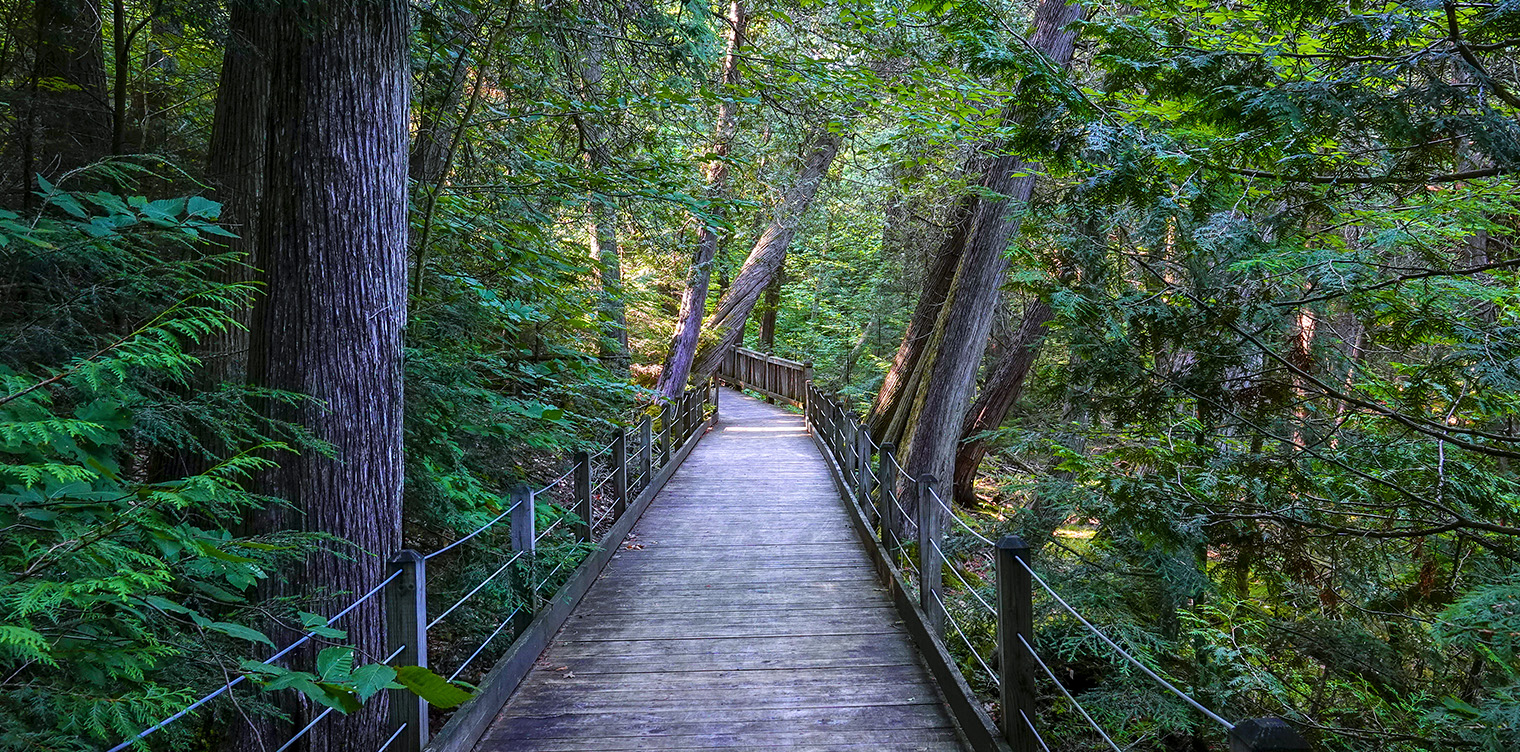
About 100 native species of trees are present in the Adirondack Mountains. Many of these are found only on the lower elevations of the Adirondack Park. Only about thirty species can be found in the Adirondacks high peaks region.
- The tree species present in the region's forest communities vary, depending on regional climate, topography, drainage, and soils.
- Adirondack forest communities also reflect the impact of human activities over the past two centuries. Over 80% of the forestland in the Adirondack Park has been disturbed by human activity, mainly logging. As a result, many of our forest communities are in various stages of succession.
- Our forest communities are also dynamic; the trees present in a particular location respond in different ways as the forest matures and is affected by other factors, such as climate change, fire, and ongoing logging operations.
The trees that grow within the Adirondack Park can be categorized in a variety of ways, reflecting different strategies for dealing with harsh winters.
- Some forests are dominated by needle-leaved trees or conifers, such as Eastern White Pine, Northern White Cedar, Red Spruce, or Balsam Fir. In regions with short growing seasons, like the Adirondacks, needle-leaved species tend to be best-equipped to survive, since their needles, stems, and roots are filled with resinous chemical that serve as botanical antifreeze. Nearly all conifers are evergreen.
- Northern hardwood forests, by contrast, are comprised mainly of broad-leaved or deciduous species, such as Sugar Maple, Red Maple and Paper Birch. These species are better-equipped to catch the sun's rays. Regions with a longer growing season, which gives such trees a chance to drop their leaves in winter and grow new leaves in spring, tend to be dominated by broad-leaved trees.
- Many of the forested areas of the Adirondacks, with a short growing season and cold winter temperatures, are mixed wood forests, with a mix of these two categories of trees.
Another way to study trees is to examine its habitat preference. Some trees are generalists, which can survive (but perhaps not thrive) in a wide variety of soil and topographic conditions. Others, like the Black Spruce, are less often found outside its usual habitat (wetlands), because it does not compete successfully with other species that can grow in more productive sites.
Adirondack Shrubs
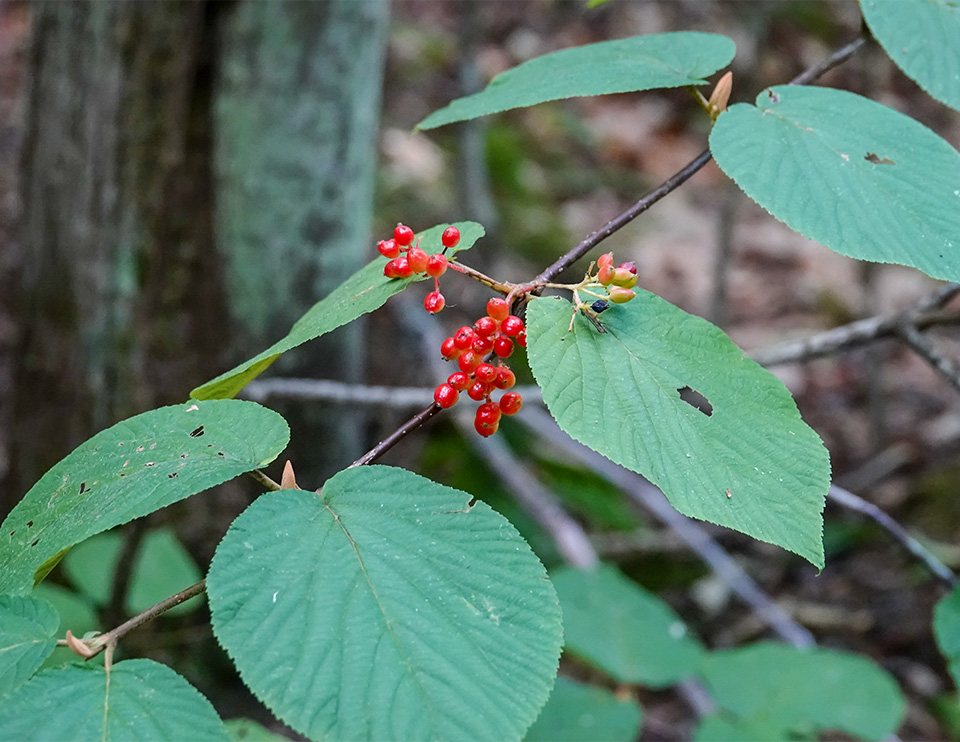
Trees form the canopy of Adirondack forests, but shrubs play an important role in the understory. A shrub is a perennial, multi-stemmed woody plant. It is distinguished from a tree by its multiple stems and shorter height, usually under 16 feet. Some plants usually characterized as shrubs may grow into small trees under optimal growing conditions.
Like trees, shrubs can be deciduous (like Steeplebush, Hobblebush, and Northern Wild Raisin) or evergreen (like Labrador Tea and Leatherleaf).
- The foliage of some deciduous shrubs, like Hobblebush, turns brilliant purple or yellow before shedding prior to the winter season.
- Many shrubs, like Bog Rosemary and Bog Laurel, have showy flowers in spring. Others, like Steeplebush and White Meadowsweet, bloom in the summer.
- Some shrubs, such as Hobblebush and Red Elderberry, add to the palette of fall colors by producing showy berries in late summer or autumn after flowering.
Shrubs are a dominant element in some wetlands. The nutrient-poor peat of a bog, for instance, hosts few trees; and those that can survive here (such as Tamarack and Black Spruce) are small and stunted. Several shrubs, however, are well-suited to this habitat. Shrubs which flourish on the carpet of acidic peat of a bog include evergreen members of the heath family, such as Sheep Laurel, Bog Laurel, Leatherleaf, Bog Rosemary, and Labrador Tea.
Mosses of the Adirondacks
Mosses are vital and fascinating components of the Adirondack landscape, delighting the senses by providing a lush background of varying greens and golds for wildflowers and fallen leaves. Looking for mosses along the trails adds another layer of depth to knowing and appreciating the Adirondack forest.
- Mosses are small flowerless plants that usually grow in dense green clumps or mats, in damp or shady locations. Like other land plants, mosses contain green chlorophyll and survive through photosynthesis, using the energy of sunlight to combine carbon dioxide and water to make the sugars used to build stems, leaves, and reproductive structures. There are some 22,000 species of moss worldwide.
- Mosses are widely distributed, growing on both moist and dry ground, on bare rocks and ledges, on trees, and on decaying wood such as old logs. Mosses are especially abundant in cool, shady, moist woods, but can be found in drier and more open places, such as old field and meadows.
- Mosses commonly encountered along Adirondack trails include Common Haircap Moss, Stair-step Moss, Red Stem Moss, and Pincushion Moss. Sphagnum Moss is a key organism in boggy areas, providing a thick carpet of vegetation on which other plant life flourishes.
Mosses serve essential roles in Adirondack ecosystems. They can survive without being rooted in soil, so they are able to grow on cliffs, boulders, steep hills, and tree trunks, where other plants cannot survive. Mosses also absorb water from rain and runoff, slowly releasing it to the ground, thus reducing stream erosion and fluctuating lake levels. In addition, mosses provide homes for the many small organisms that underpin entire ecosystems, providing a home for insects that, in turn, feed frogs, snakes, and the mammals that feed on them.
Ferns of the Adirondacks
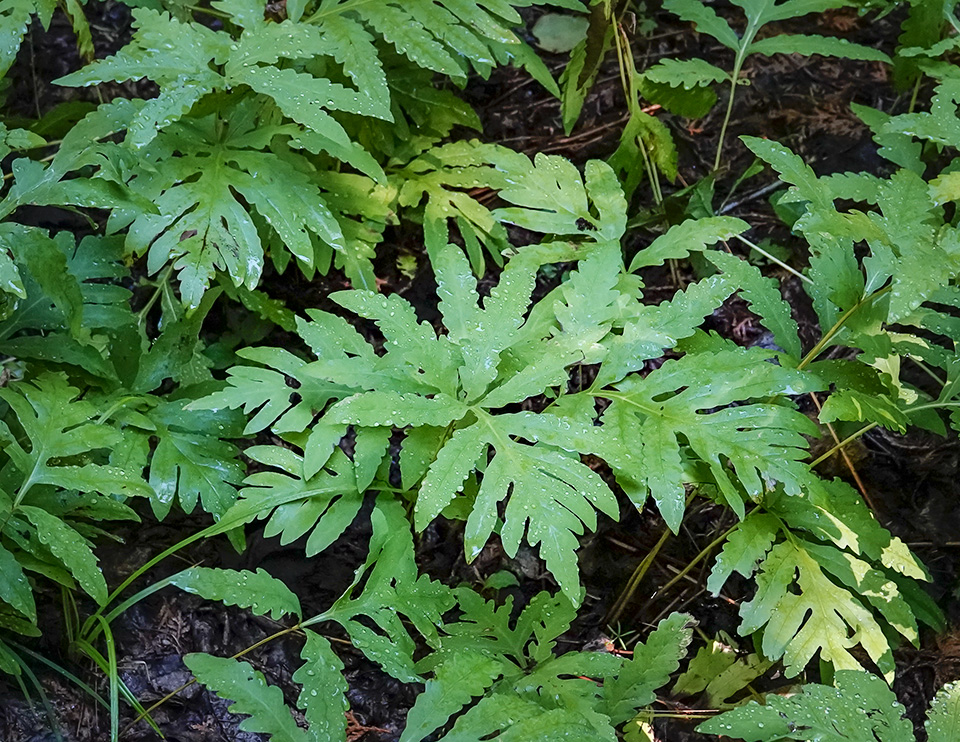
Ferns are non-flowering, vascular plants that reproduce by spores – dust-like particles found on various locations on the plant. Like other vascular plants, ferns have certain tissue that conducts water and nutrients. This sets them apart from non-vascular plants, such as moss and liverworts.
- Some ferns, such as the Christmas Fern, are evergreen, and can be found all year.
- Other ferns are visible only in summer. Their foliage dies back in the late fall, but not before many of them have added to the brilliant colors of fall with their own yellow or golden hues.
- Ferns grow in a variety of habitats including woods, fields, and wetlands.
There are about 12,000 species of ferns worldwide, but only about 100 occur in northeastern and central North America. About 60 fern species are present in the Adirondack Mountains. The most common ferns encountered along the trails in our region include Spinulose Wood Fern, Eastern Bracken Fern, Sensitive Fern, Cinnamon Fern, Royal Fern, Interrupted Fern, Hay-scented Fern, New York Fern, Maidenhair Fern, and Northern Lady Fern.
References
Michael Kudish. Adirondack Upland Flora: An Ecological Perspective(Saranac, New York: The Chauncy Press, 1992).
Russell Burns and Barbara H. Honkala. Silvics of North America: Volume 1. Conifers (United States Department of Agriculture, Forest Service, 1990). Retrieved 25 April 2019.
Russell Burns and Barbara H. Honkala. Silvics of North America: Volume 2. Hardwoods (United States Department of Agriculture, Forest Service, 1990). Retrieved 25 April 2019.
United States Department of Agriculture. Fire Effects Information System (FEIS). Species Reviews. Retrieved 25 April 2019.
United States Department of Agriculture. Natural Resources Conservation Service. Plants Database. Retrieved 25 April 2019.
Donald J. Leopold and Lytton John Musselman. Wildflowers of the Adirondacks (Johns Hopkins University Press, 2020).
Anne McGrath. Wildflowers of the Adirondacks (EarthWords, 2000).
Doug Ladd. North Woods Wildflowers (Falcon Publishing, Inc, 2001).
William K. Chapman and Alan E. Bessette. Trees and Shrubs of the Adirondacks. A Field Guide (North Country Books, 1990).
John Kricher. A Field Guide to Eastern Forests of North America (Houghton Mifflin Company, 1998).
E. H. Ketchledge. Forests and Trees of the Adirondack High Peaks Region (Adirondack Mountain Club, 1996).
Boughton Cobb et al. A Field Guide to Ferns and Their Related Families. Northeastern and Central North America (Houghton Mifflin Company, 2005).
Robbin C. Moran. A Natural History of Ferns (Timber Press, 2004).
Karl B McKnight. Common Mosses of the Northeast and Appalachians (Princeton University Press, 2013).
Robin Wall Kimmerer. Gathering Moss. A Natural and Cultural History of Mosses (Oregon State University Press, 2003).
Peter J. Marchand. Nature Guide to the Northern Forest. Exploring the Ecology of the Forests of New York, New Hampshire, Vermont, and Maine (Appalachian Mountain Club, 2010).
William F. Porter, "Forestry in the Adirondacks: An Economy Built on a Handful of Species," William F. Porter, Jon D. Erickson and Ross S. Whaley. The Great Experiment in Conservation. Voices from the Adirondack Park (Syracuse University Press, 2009), pp. 102-113.
